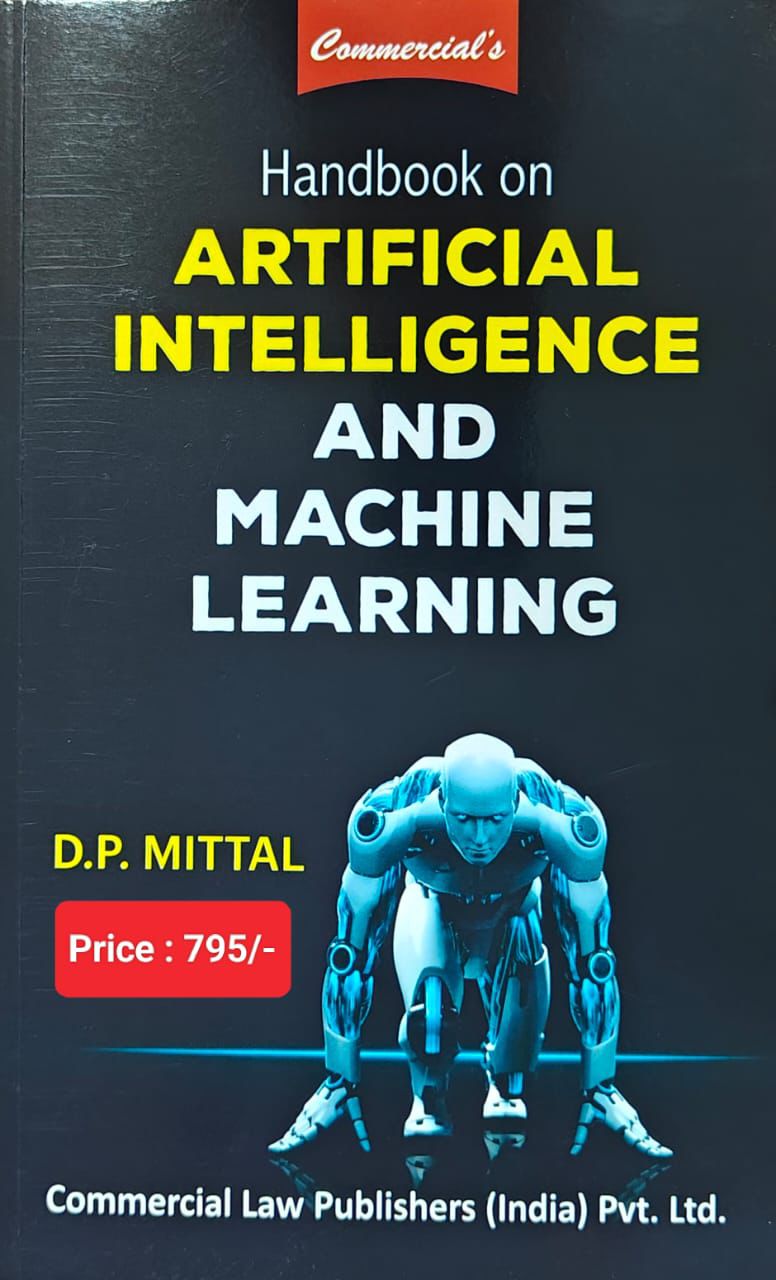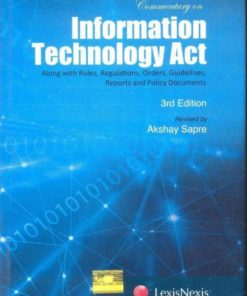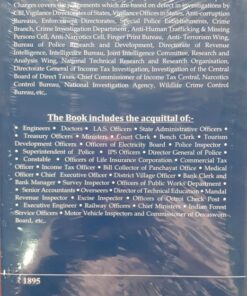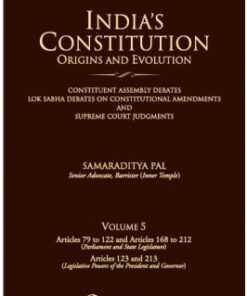- Publisher : Commercial Law Publishers (India) Pvt. Ltd.
- Author : D.P. Mittal
- Edition : 1st Edition 2024
- ISBN-13 : 9789356036208
- ISBN-10 : 9789356036208
- Language : English
- Binding : Paperback
Commercial’s Handbook on Artificial Intelligence and Machine Learning by D.P. Mittal
₹795.00 Original price was: ₹795.00.₹636.00Current price is: ₹636.00.
Commercial’s Handbook on Artificial Intelligence and Machine Learning by D.P. Mittal – 1st Edition 2024.
8 in stock
Commercial’s Handbook on Artificial Intelligence and Machine Learning by D.P. Mittal – 1st Edition 2024.
Commercial’s Handbook on Artificial Intelligence and Machine Learning by D.P. Mittal – 1st Edition 2024.
About the book
The object of the book, as its title indicates, is to explain about artificial intelligence and machine learning. Artificial intelligence, or AI, is technology that enables computers and machines to simulate human intelligence and problem-solving capabilities. Currently, computers execute tasks based on commands and code. Artificial intelligence aims to actually teach computers to think for themselves, using the human learning process as a model. The tasks requiring human intelligence are now performed by machine, such as learning, reasoning, problem-solving, perception, speech recognition, and language understanding. AI aims to create machines that mimic human cognitive functions ( i.e., the mental process of comprehension, judgment, memory, and reasoning) and adapt to different situations . AI can scan and analyze vast amounts of data, enabling it to replicate human-like intelligence and is on its way to surpassing it in the near future.
However, this data also poses significant risks, from breaches of confidentiality to identity theft and beyond. To strive for a balance between technological change and possible challenges, a comprehensive regulation is required. The European Union (EU) leads with comprehensive AI regulations focusing on high-risk applications, transparency, and safety. Similarly, the USA emphasizes accountability and the protection of civil liberties in its AI guidelines. In Asia, China and Singapore are developing AI governance frameworks balancing innovation with security and public welfare The Indian Government is also contemplating a similar enactment in this regard.
The book is an attempt at explaining the basics of artificial intelligence and its components such as machine learning, deep learning, deepfakes, generative AI as a technology for creativity, content creation, and problem solving. It commences with explaining artificial intelligence as a concept, in an introductory chapter. Chapter 2 deals with what artificial intelligence means, its history and development, its limitations, risks and harm and its role in healthcare, agriculture, education, finances and financial markets, market and industry, robotics, manufacturing, transportation and logistic. Chapter 3 deals with data and algorithms which enable computers to process large amounts of data, find patterns in that data, and make decisions or predictions based on those patterns and also deals with algorithmic bias, algorithmic transparency and algorithmic accountability. Chapter 4 deals with machine learning, deep learning and deepfake .Chapter 5 deals with generative artificial intelligence as a transformative technology going beyond the limitations of traditional AI and using machine learning to generate entirely new and realistic content such as images, videos, music, speech, text, software code, and product designs Chapter 6 deals with ChatGPT a conversational Artificial Intelligence chatbot created to answer questions and respond to queries through a chat interface that sounds human and authentic, how it works and how accessed, its limitations and concerns . Chapter 7 deals with cybersecurity and cybercrimes and the role of AL/ML. Chapter 8 deals with European Union Act designed to establish the world’s first comprehensive regulatory framework for Artificial Intelligence (AI). Chapter 9 is a Glossary chapter. Apart from these Appendices covers The Digital Personal Data Protection Act, 2023 and The Information Technology Act, Rules and Regulations.
Details :-
| Publisher | |
|---|---|
| Author | |
| Language |
Be the first to review “Commercial’s Handbook on Artificial Intelligence and Machine Learning by D.P. Mittal” Cancel reply
Related products
Information Technology
Lexis Nexis Commentary On Information Technology Act by Apar Gupta
Bharatiya Sakshya Adhiniyam
Lexis Nexis The Law of Evidence (Paperback) by Ratanlal & Dhirajlal 27th Edition August 2019
Bharatiya Nyaya Sanhita
Lexis Nexis’s The Indian Penal Code by Ratanlal & Dhirajlal – 36th Edition July 2019














Reviews
There are no reviews yet.